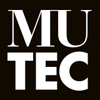Dan Hicks explores the potential and implications of digital technologies for museums in the future. He argues that the first step in this process is to recognise that museums are places not just for the display of information, but for the co-production of knowledge. Museums, in other words, are not just collections of objects, but always collections of ideas
 About the author: Dan Hicks FSA, MCIfA is Associate Professor of Archaeology at the University of Oxford and Curator at the Pitt Rivers Museum. Dan is a Fellow of St Cross College, Oxford, a Trustee of the Society of Antiquaries of London, and directs the AHRC-funded Oxford University Museums Collaborative Doctoral Partnership programme. He has published widely and his books include The Oxford Handbook of Material Culture Studies (2010) and World Archaeology at the Pitt Rivers Museum (2013). Dan spoke at the Museum Ideas 2016 conference in London.
About the author: Dan Hicks FSA, MCIfA is Associate Professor of Archaeology at the University of Oxford and Curator at the Pitt Rivers Museum. Dan is a Fellow of St Cross College, Oxford, a Trustee of the Society of Antiquaries of London, and directs the AHRC-funded Oxford University Museums Collaborative Doctoral Partnership programme. He has published widely and his books include The Oxford Handbook of Material Culture Studies (2010) and World Archaeology at the Pitt Rivers Museum (2013). Dan spoke at the Museum Ideas 2016 conference in London.

What will the Pitt Rivers Museum in Oxford look like in fifty years time? I’m probably the wrong person to ask. I’m an archaeologist, so my academic discipline is usually concerned with thinking about the past not the future. And I’m a museum curator, so my institution is normally concerned with keeping things stable, preventing decay, loss or change. Museum vitrines are designed create a kind of artificially endless present tense. Each glass-fronted case is a stopped watch. Everyone (even the Curator-Archaeologist) quickens their pace as they pass the fossils and the dodo, skip down the steps, and walk back out into the fresh air and the sunlight to resume the normal passage of time. A museum like the Pitt Rivers is more time capsule than time machine, built to bring objects to a standstill. Archaeology simply puts this capsule into reverse, focusing only on the detritus of the human past. So let’s get the old archaeological joke out of the way at the outset: The Future’s Not My Period.
“A museum like the Pitt Rivers is more time capsule than time machine, built to bring objects to a standstill. Archaeology simply puts this capsule into reverse”
This is not to say that Archaeologist-Curators never think about the future. In the history of the Pitt Rivers one example of such thinking springs immediately to mind, and it is one that came about just over half a century ago. In October 1964, the Pitt Rivers Museum appointed a new Curator (its third since 1891). Bernard Fagg, a distinguished archaeologist and curator, had been the Director of the National Museum in Nigeria, where he had rebuilt the museum. From the moment of his appointment Fagg began work on a plan for a new Pitt Rivers Museum. Patrons including the French anthropologist Claude Lévi-Strauss and the premiers of Ethiopia, Senegal and Malaysia were gathered. A decree authorizing the purchase of a new site in North Oxford from St John’s College was adopted by Congregation. And in 1966, a design for the new museum was commissioned from Italian architect Pier Luigi Nervi and London architects Powell and Moya.
Nervi’s proposed concrete and glass rotunda was 92 metres in diameter, providing 28,400 square metres of interior space across four stories (two of which were underground). It brought together the full range of Archaeological and Anthropological activities of the University at one site: the collections of the Pitt Rivers and the Balfour Library, the Institute of Archaeology, the Institute of Social Anthropology, the Laboratories for Physical Anthropology, Environmental Archaeology, and the Research Laboratory for Archaeology and the History of Art. There would be three lecture rooms; a Centre for Musicology with a recording studio; a range of museum laboratories and workshops; a Photographic Department with darkroom, studio and print library; a suite of workrooms for post-excavation research; and a coffee bar and a restaurant.
“The plans to leave the Victorian building behind were unsuccessful for a number of reasons…protests from local residents, problems reaching the fundraising targets. But the project also suffered from a flawed vision of the future”
An enormous glass dome enclosed a special tropical and subtropical ‘Climatron’, inspired by the iconic domed planthouse built at the Missouri Botanical Garden in St Louis in 1960. The circular galleries allowed for the anthropological and archaeological collections to be arranged both geographically (by circumference), and typologically or temporally (radially). The proposed museum would have looked quite in character among the buildings of Tracy Island – the secret South Pacific base of the International Rescue organisation in the children’s television programme Thunderbirds (first broadcast 1965).[i]
Fagg’s plans to leave the Victorian building behind were unsuccessful for a number of reasons. There were protests from the residents of Bradmore Road, and problems in reaching the fundraising targets. But the project also suffered from a flawed vision of the future. It was, to borrow a term coined by the composer Leonard B. Meyer, a ‘chronocentric’ plan.[ii]
Anthropological museums have often been charged with ethnocentrism, but Fagg’s archaeological chronocentrism was driven by his own immediate modern intellectual concerns. In Fagg’s vision of the future, temporal, geographical and typological arrangements were resolved in a single display regime, and the full range of archaeological and anthropological endeavour was brought together at a single location for the study of world culture, past and present. This finality of vision moved away from the spirit of Augustus Pitt-Rivers’ own more open-ended vision of the future of typological museums which, writing in 1891, he imagined ‘would require constant rearrangement’, to the extent that ‘the cases might, perhaps, be put on wheels to facilitate their readjustment’[iii].
How else might we think about the future of the Pitt Rivers Museum in fifty years time – a full century after Fagg’s unsuccessful scheme? We might start with thinking about the present day in a different way. Today we are living through a period of rapid technological changes comparable with those of Victorian Britain. The Victorian Museum Age, and the evolutionary thinking that accompanied it, was to a large extent a response to the technological and social changes – changes in transportation, empire, the measurement of time and space, urban form, and material culture.

The digital transformation of knowledge and culture is just getting underway, but there are already strong indications that it will bring in its wake a second Museum Age. The sheer numbers of museum visitors alone tell us much. To take some examples from the UK, during 2013-14 there were 6.7 million visitors to the British Museum and 6.4 million to the National Gallery. Oxford University’s four museums – the Ashmolean, Pitt Rivers, Oxford University Museum of Natural History and Museum of the History of Science – received more than 2.1 million visitors. As visitor numbers have grown, construction and expansion has transformed museums around the world. In 2013, reporting on the re-opening of the Rijkesmuseum, the Van Gogh Museum and the Stedelijk Museum in Amsterdam, the New York Times announced ‘a golden age of museum renovation’.[iv] In China, the 25 museums that existed in 1949 had grown to more than 3,500 by 2013. In the universities, interdisciplinary interest in museum collections and material culture is burgeoning. The economic and social impacts of museums are now widely recognised, from tourism to the quality of life and wellbeing that people gain from living alongside culture. Perhaps even the longstanding decline in individual giving to museums – the tradition of philanthropy to which the Pitt Rivers owes its beginning – may be starting very slowly to abate.
“Signs of a new Museum Age are clearest in digital culture. Billions of everyday curatorial acts are going on around us – you see people documenting, cataloguing and sharing what they see, where they are, who they are with, what they are thinking or feeling”
But signs of a new Museum Age are clearest in digital culture itself. The hundreds of millions of online visitors to museum websites and open access resources are one small part of this. Many more billions of everyday curatorial acts constantly going on around us. Walk through the centre of any historic city, or pause to observe museum visitors in the galleries, and you see people documenting, cataloguing and sharing what they see, where they are, who they are with, what they are thinking or feeling, through an ever-widening array of apps and devices. Some lament the second-handedness of visitor experience refracted through screens, but engagements with museum objects have always been mediated and mimetic. The screens of their devices simply develop new kinds of engagement with collections from older technologies – the glass case, the cast, the photograph.
In long-term perspective, Oxford University’s collections have developed over six centuries, punctuated roughly once every 200 years by new benefactions and institutions. The opening in 1488 of Duke Humfrey’s Library, housing the manuscripts donated by Humphrey of Lancaster, 1st Duke of Gloucester, was followed in 1683 by the benefaction of Elias Ashmole that formed the basis of the Ashmolean Museum; and in 1884 by the donation of the Pitt Rivers collection. Each of these moments – 1480s, 1680, 1880s – was intimately related to new kinds of knowledge: Rennaissance, Empiricist, Evolutionary.
“Historic collections will no longer gather dust, and undoubtedly new forms of contemporary collecting will emerge. The Digital Museum Age will not diminish the museum as an institution, but will strengthen it by unlocking the cabinets”
Next, Digital. The Museum Age of the 19th century was focused on exhibitionary practices, where a curatorial vision presicely shaped what was selected and presented – an approach that continued into Fagg’s grand 1960s scheme. By AD 2065 a Digital Museum Age (DMA) will have unfolded those practices. Museums will remain public institutions, but digitalism will have transformed the public realm. Open methods will replace exhibitionary practices. DMA will happen not just in the galleries, but mainly in the storerooms. Connections between objects in different repositories, and with people, places and communities far beyond the museum, will be ignited and reignited. DMA will require us to build not new galleries, but new research centres where objects are freed from cardboard boxes and ziplock bags. DMA will serve to re-humanize museum objects. Historic collections will no longer gather dust, and undoubtedly new forms of contemporary collecting will emerge. DMA will not diminish the museum as an institution, but will strengthen it by unlocking the cabinets.
The first step in the process will be to recognise that museums are places not just for the display of information, but for the co-production of knowledge. Museums, in other words, are not just collections of objects, but always collections of ideas.
Dan Hicks, Associate Professor of Archaeology, University of Oxford, and Curator, Pitt Rivers Museum
[i] See discussions in Mike O’Hanlon’s recent book The Pitt Rivers Museum: a world within (2014, London: Scala) and Chiara Bleckenwegner’s 2014 essay ‘The Unbuilt Pitt Rivers Museum’ (typescript on file at the Pitt Rivers Museum).
[ii] Leonard B. Meyer 1967. Music, the Arts, and Ideas: patterns and predictions in twentieth-century culture. Chicago: University of Chicago Press, Chapter 7.
[iii] Augustus Pitt-Rivers 1891. Typological Museums, as exemplified by the Pitt Rivers Museum at Oxford, and his provincial museum at Farnham, Dorset. Journal of the Society of Arts 40: 115-122.
[iv] New York Times 1 May 2013.
This essay was first published in the 2015 issue of Crossword – the magazine of St Cross College – and was written as part of the celebrations of the 50 year anniversary of St Cross College, Oxford. It can also be found on Dan Hicks’ blog: http://profdanhicks.blogspot.co.uk/













































